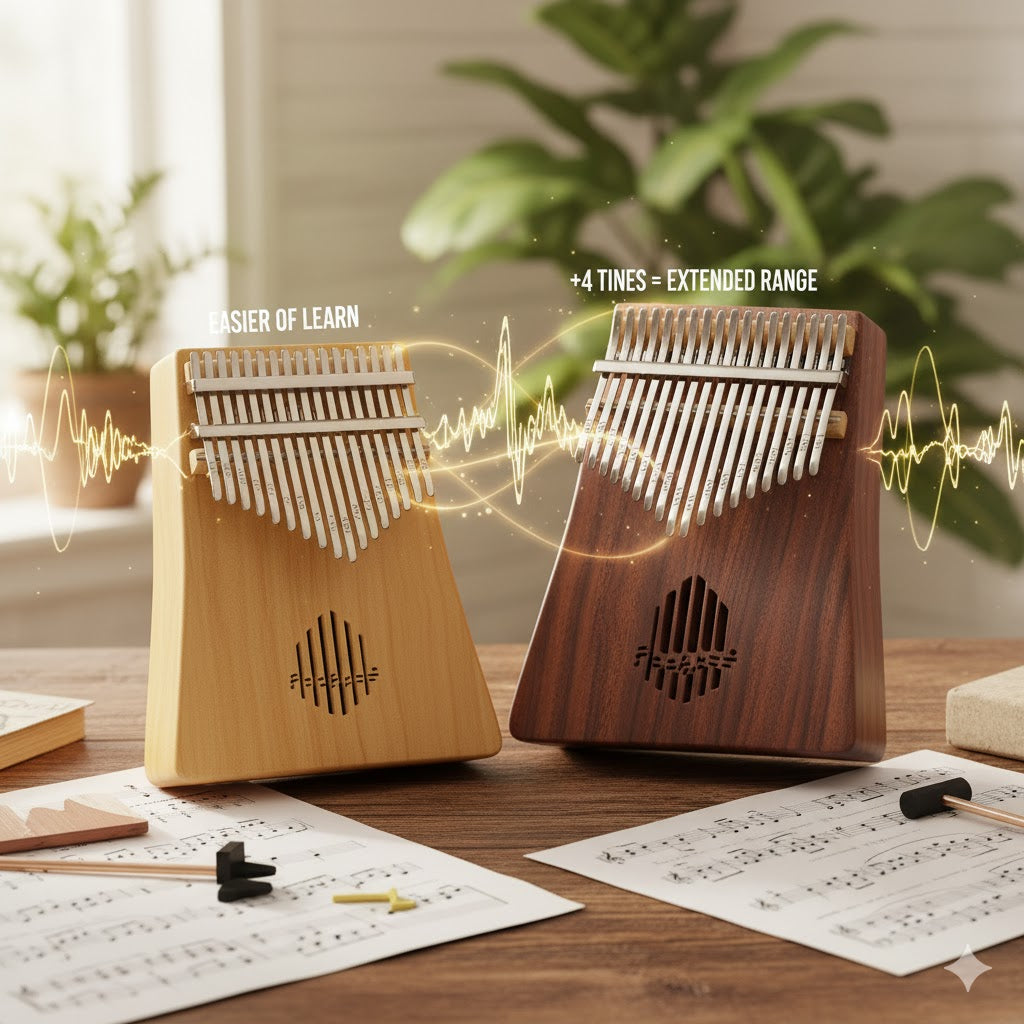Stop Debating: 17-Key vs. 21-Key Kalimba—Which is Best for Beginners?

🎵 Main Post: The Ultimate Guide to the 17-Key Kalimba
Summary: Why the 17-Key is the Gold Standard (H2)
Among the various key counts available (such as 8-key, 10-key, 17-key, 21-key), the 17-Key Kalimba is undoubtedly the market's gold standard. It perfectly balances tonal range and learning difficulty, allowing beginners to "get it right the first time" and avoid having to upgrade too soon.
I. The Four Core Advantages of the 17-Key Kalimba (H2)
Why do music teachers and experienced players recommend starting with the 17-key?
1. Sufficient Tonal Range Coverage (H3)
The 17-key Kalimba is typically tuned to C Major, covering two full octaves, plus a few extra extended notes.
-
Enough for Most Songs: This range is sufficient for playing the vast majority of popular songs, classic nursery rhymes, and many complex solo pieces.
-
Avoids Limitation: Unlike 8-key or 10-key Kalimbas, the 17-key model prevents you from being limited by the range halfway through your learning journey.
2. The Perfect Learning Curve (H3)
The number of keys on a 17-key Kalimba is challenging enough to be engaging, yet not overwhelming for beginners, making the learning process enjoyable.
-
Intuitive Layout: The tines start at the central C note (1) and alternate up the scale to the left and right, which naturally suits the two-thumb playing style.
-
Abundant Resources: Almost all online tutorials, tablatures (tabs), and sheet music are designed for the 17-key C-tuned Kalimba, ensuring a wealth of learning material.
3. The Versatility of C Major (H3)
The standard 17-key Kalimba is tuned to C Major, which is naturally free of sharps or flats (# or b).
-
This means you can easily play any C Major score without complex transposing, truly allowing you to "pick up and play."
4. Cost-Effective "Long-Term Investment" (H3)
For budget-conscious beginners, the 17-key Kalimba offers the best value. A good quality 17-key instrument can still be used for daily practice or recording even after you advance.
II. The Big Decision: 17-Key vs. 21-Key—Which is Right for You? (H2)
This is the most common dilemma for a new buyer. Here is a clear breakdown:
| Feature | 17-Key Kalimba | 21-Key Kalimba | Our Recommendation |
| Key Count | 17 Tines | 21 Tines | Beginner Standard |
| Tonal Range | ~2 Octaves (C4 to E6) | ~2.5 Octaves (Extends Higher/Lower) | 17-Key offers sufficient range for most popular music. |
| Learning Curve | Easy to Moderate | Moderate to Advanced | Beginners should start with the 17-key for its simpler layout. |
| Primary Goal | Casual playing, relaxation, simple melodies, most pop songs. | Complex harmonies, professional arrangements, wider range pieces. | 21-Key is for intermediate players looking for more capabilities. |
III. Essential Buying Tips: Wood and Soundboard (H2)
Once you decide on the key count (most likely 17), the next step is choosing the material and body type.
| Characteristic | Hollow Body (Box Type) | Flatboard (Solid Body) | Ideal Player |
| Sound Profile | Louder, strong resonance, has a "wah-wah" effect (via sound hole). | Clear, pure tone, excellent sustain, less noise. | Hollow: Volume seekers, outdoor players; Flatboard: Recording, tone purity focus. |
| Common Woods | Mahogany/Koa: Warm, soft tone. | Maple/Bamboo: Bright, crisp tone. | Beginners: Mahogany (affordable, warm tone). |
💡 Advanced Tip: If you plan to explore more complex chromatic music in the future, consider a 21-key or a dedicated chromatic Kalimba later. But for the majority of popular songs, the 17-key is all you need.